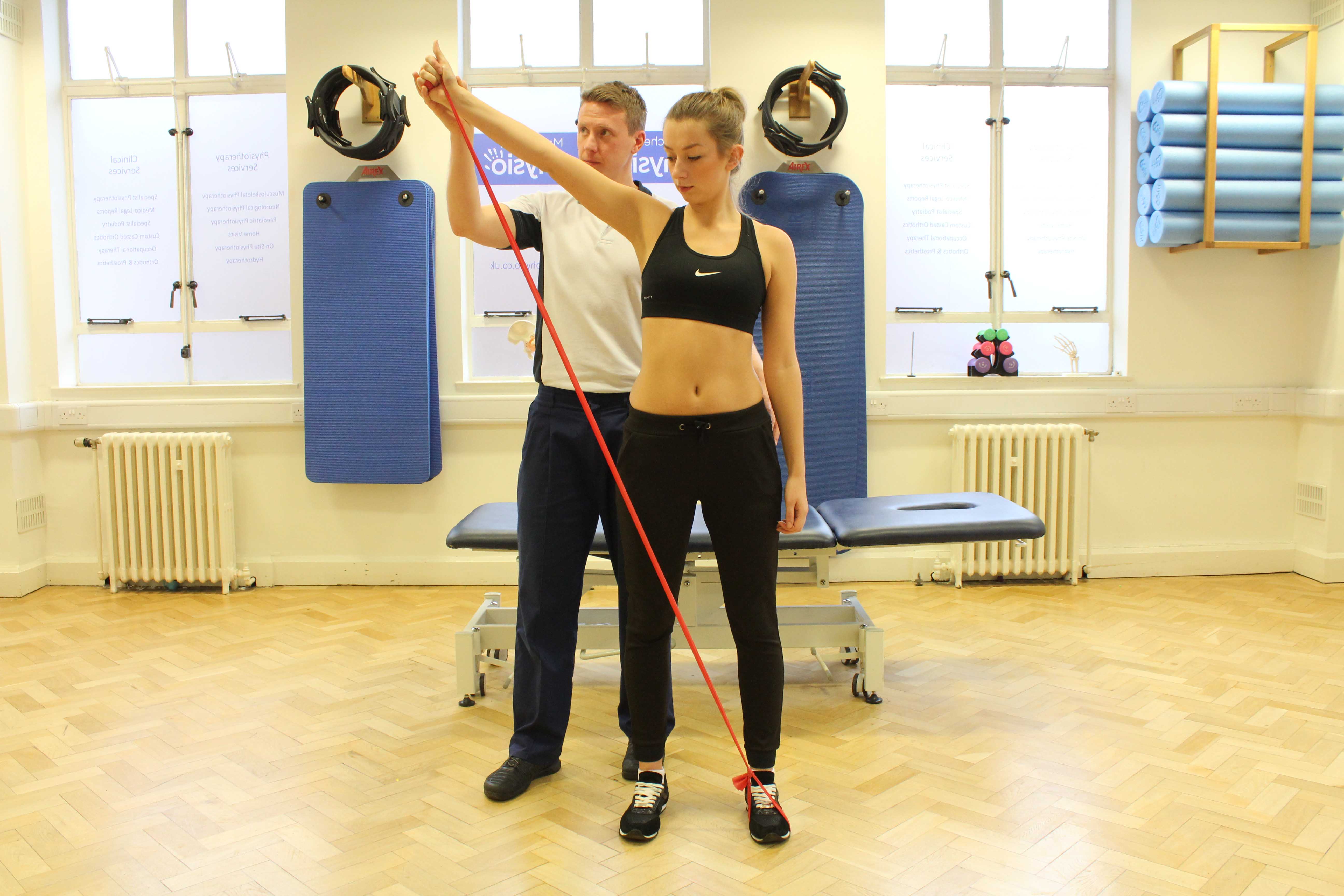What is thoracic outlet syndrome?
Thoracic outlet syndrome is caused by compression of nerves or blood vessels in the thoracic outlet area of the body. The thoracic outlet is the space between your collar bone (clavicle) and first rib. Physiotherapy can successfully treat symptoms of thoracic outlet syndrome.
 Above: Shoulder toning exercises supervised by experienced physiotherapist
Above: Shoulder toning exercises supervised by experienced physiotherapistWhat can cause thoracic outlet syndrome?
Thoracic outlet syndrome can be caused by an injury to the area or because the muscles around the area are not strong enough to support it. The condition can be diagnosed from birth (congenital thoracic outlet syndrome) for reasons that are unknown. Thoracic outlet syndrome is more common in women than men and the risk increases with age.
What are the symptoms of thoracic outlet syndrome?
If blood vessels are affected, the blood supply to your hand and arms may be disrupted. This could cause the area to feel cold and clammy. If the nerves in the thoracic outlet region are compressed, you may experience numbness and tingling in the hands and arms. Other symptoms of thoracic outlet syndrome include:
What should I do if I have thoracic outlet syndrome?
If you notice any of the symptoms of thoracic outlet syndrome, it is important to obtain a professional opinion from your doctor as soon as possible. They may send you for a number of tests include X-rays, MRI scans and nerves tests to form an accurate diagnosis. Physiotherapy is a very successful way of treating thoracic outlet syndrome and will help you return to a normal active lifestyle.
What shouldn’t I do if I have thoracic outlet syndrome?
Do not ignore your symptoms or try and treat the condition itself as this will delay your recovery and could increase the risk of future complications in the upper limb area.
Physiotherapy thoracic outlet syndrome.
The physiotherapy you receive for thoracic outlet syndrome will be tailored to your symptoms and goals. Physiotherapy may include strengthening and stretching exercises and a postural retraining programme. Other treatments include:
Can thoracic outlet syndrome have any long-term effects?
If you begin physiotherapy soon after you have received confirmation of your diagnosis, you are likely to experience a full recovery from thoracic outlet syndrome. However, if you delay treatment, return to a symptom free lifestyle may take longer.
To arrange a physiotherapy appointment call Physio.co.uk on 0330 088 7800 or book online.

 0330 088 7800
0330 088 7800





































